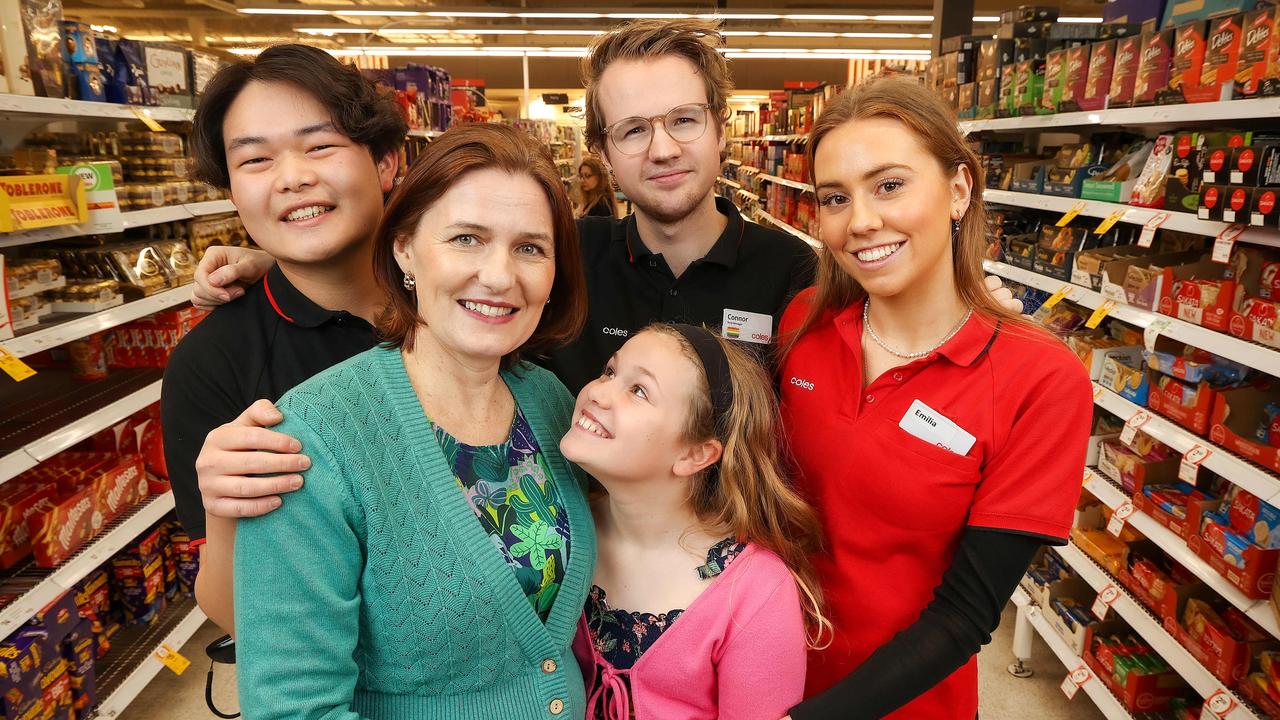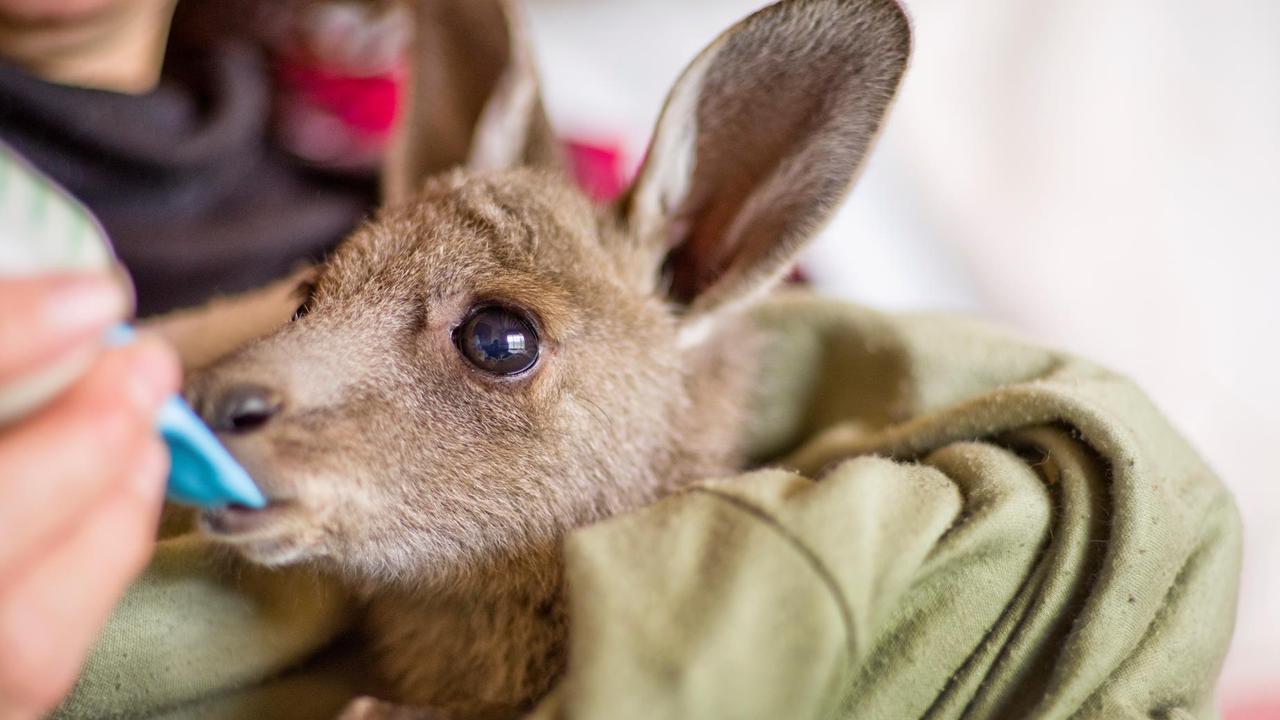Andrew Rule: Inside Australia’s baddest bikie gang — the Comanchero
THERE’S more to bikies than bullet wounds and brothels. Comanchero have their grubby fingers in many rorts but “debt collection” is a specialty. NEW PODCAST SERIES — LISTEN NOW.
VIC News
Don't miss out on the headlines from VIC News. Followed categories will be added to My News.
THERE are bikers, there are outlaws and then there are Comanchero: gangsters on Harleys who have hacked out a niche in the Australian crime scene with extreme violence.
Behind legitimate or semi-legit fronts like tattoo parlours, gyms and “security” firms, they might pretend to be a bunch of like-minded bogan bikers who get together to have fun with beer and strippers, but the truth is a little more sinister.
Comanchero Inc. is a serious crime family with more rackets than The Sopranos and more ink than the New York Times.
The way they go about terrorising victims is straight from Clockwork Orange. They have their grubby fingers in many rorts but “debt collection” is a specialty.
COMANCHERO BUSINESSES TARGETED IN POLICE RAIDS
Gang members routinely “buy” debts at a half-price discount then set out to collect the full amount using maximum intimidation through extreme force.
It is a short step from “debt collecting” to just “collecting” without bothering about a debt. This is otherwise known as extortion, as outlined in the Supreme Court recently in a hearing that highlights how brazenly outlaw bikers stand over other citizens.
The court was considering the case of a Comanchero member, not yet 30 years old, with prior convictions for trafficking amphetamines, causing serious injury, dealing in proceeds of crime and possession of drugs, weapons and explosives.
Apart from a fondness for handguns, knives and swords, he is also apparently handy with social media — the sort of user who put the “gram” into Instagram.
In fact, prosecutors say, he used Instagram to order a victim to meet him at a suburban gym. When the target turned up, two waiting Comanchero allegedly demanded his Harley-Davidson motorcycle or $15,000 cash (payable that day) otherwise “you’ll get your head smashed in”.
MALE MODEL EMERGES AS NEW COMMANDER OF COMANCHERO
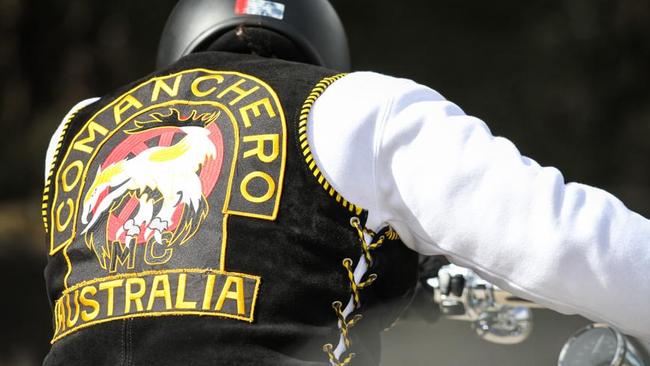
The victim couldn’t raise the cash so he met the Comanchero at a suburban golf club and handed over his new Harley (and helmet), worth $35,000.
But that wasn’t enough.
The standover man allegedly ordered him to meet again, this time to sign over the VicRoads ownership papers for the motorcycle.
There were three Comanchero present this time, so the terrified target did not have much choice but to comply. Tagged as an easy mark, he was threatened by other Comanchero, who demanded cash from him several times.
Caught between financial ruin and serious injury, the victim was caught in a sickening dilemma.
In desperation, he turned to the law.
When the police raided the alleged perpetrators they found a gun, knives, a sword and false numberplates.
Summing up the evidence, the judge said that “to put it bluntly” there was a risk that the accused or his associates would put “the frighteners” on the victim to prevent his giving evidence.
It’s called perverting the course of justice and is routine for motorcycle gangs: bikers turn up to court in groups wearing regalia identifying them as gang members. Looking at people is enough to intimidate.
BIKIE BOSS JAILED FOR REFUSING TO AID AUTHORITIES
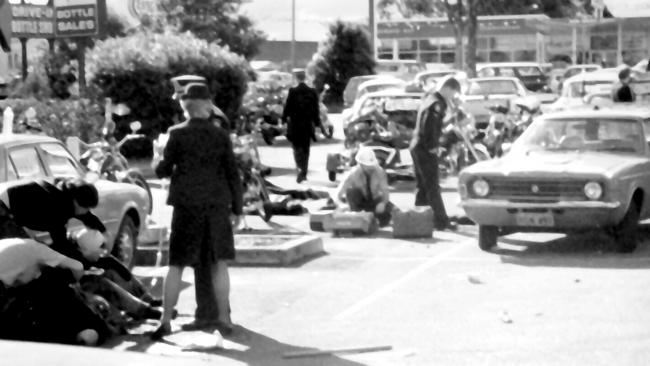
The extortion case outlined above is just one (alleged) example of the long list of violent crimes Comanchero have committed since the gang became notorious in the Milperra “Fathers Day massacre” in 1984.
History repeats itself. The recent spate of outlaw motorcycle gang violence in Melbourne has its roots in the sort of in-club tensions and interclub rivalries that led to the Milperra killings 34 years ago.
The pitched battle in a western Sydney pub carpark was the climax of a power struggle among foundation Comanchero which had prompted a breakaway group of “brothers” to set up the first Bandidos chapter in Australia.
LISTEN NOW: LIFE AND CRIMES WITH ANDREW RULE PODCAST FOR MORE
iTUNES: DOWNLOAD LIFE AND CRIMES WITH ANDREW RULE PODCAST
That split led to bad blood. It’s not the only reason for a nasty little war without end — but it’s the oldest.
Since Milperra, the gang’s internal upheavals and turf wars with rival clubs have littered its history with bloodshed.
The six bikers killed and 28 injured in the lunatic confrontation have themselves to blame but the innocent teenage bystander shot dead that day made no bad choices: Leanne Walters was just walking past when a bullet struck her.
In early 2007 more than 60 members of inner-suburbs chapters of the Nomads (previously affiliated with the Comanchero) defected to the Bandidos.
This detonated tit-for-tat firebombings and drive-by shootings that brought back echoes of Milperra.
NSW Police had to act.
FEARS FOR JAILED COMANCHERO BOSS AS FEUD RAMPS UP
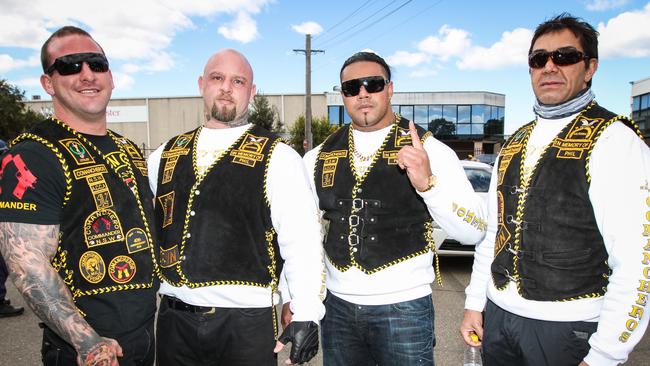
They mounted an operation which resulted in 340 people arrested on 883 charges, and tougher association laws.
That would be around the time interstate bikers started to look on Victoria as a safe haven, though not all could face a colder climate full of Collingwood fans.
In March 2009, Comanchero were again at the centre of a crime that shocked mainstream society, when they killed a rival in a terrifying public brawl with Hells Angels at Sydney Airport. Six Comanchero were arrested and convicted of “riot and affray”.
In November 2011 Comanchero’ top dog Mahmoud “Mick” Hawi was found guilty of murdering Anthony Zervas in the brawl, but in 2014 his conviction was overturned.
After a retrial, Hawi pleaded guilty to manslaughter and was sentenced to less than four years. His good luck ran out soon after the sentence did: in February this year Hawi was shot dead in his car outside a Sydney gym.
Meanwhile, Mick Murray was elected as national leader — and soon became heavily involved in biker “business” in Victoria in the absence of Amad “Jay” Malkoun, former president of the state chapter and still influential despite his self-imposed “exile” since 2014.
The fact that Malkoun has lived overseas for several years — and that Mick Murray is currently behind bars — apparently does little to ease tension. In fact, it might ratchet it up.
The club seems divided into two camps intent on winning control, even at the risk of wiping each other out.
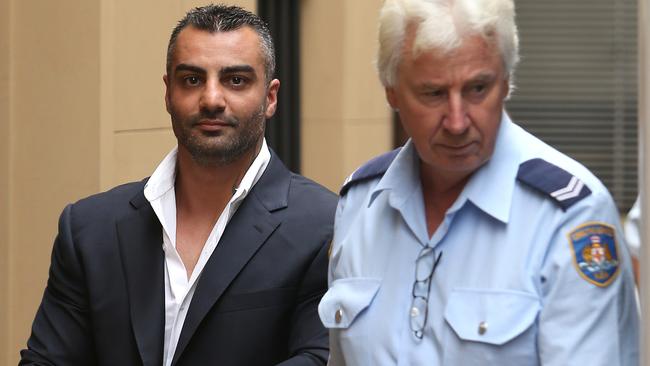
There is an element of Sydney-Melbourne rivalry in it, given that the absentee Malkoun has always been Melbourne based, whereas Murray had strong Sydney links and effectively filled the power vacuum Malkoun left.
Murray is a hands-on president with a keen following, including robust male model Hasan Topal, a rising star in the Comanchero who has to worry about faction shootings as well as fashion shoots.
But, as Mark “Chopper” Read once noted, even Beethoven had his critics.
Murray’s critics might have been responsible for the shooting of Murray loyalist Robert Ale in a Comanchero-linked tattoo parlour, Nitro Ink, in Hampton Park on February 22.
Ale survived six bullets in a daytime attack by two gunmen using a stolen Audi later found burnt out.
The shooting was the latest of several intermittent outbreaks of violence — and happened, coincidentally, the same day as Hawi’s funeral at a Sydney mosque.
Another gang member, from Tullamarine, was ambushed and shot — also six times — after being lured to a meeting at Reservoir last August.
And an underworld figure with Comanchero connections, one Nabil Moughnieh, drove himself to hospital after being shot in the head in 2016.
It is rumoured he is now known in Melbourne underworld circles as “head of stone”, a tribute to legendary world middleweight champ Roberto “hands of stone” Duran.
Speaking of Roberto, senior club member Roberto Morando is also resilient. He narrowly survived gunshot wounds when ambushed near his Narre Warren home in 2015.
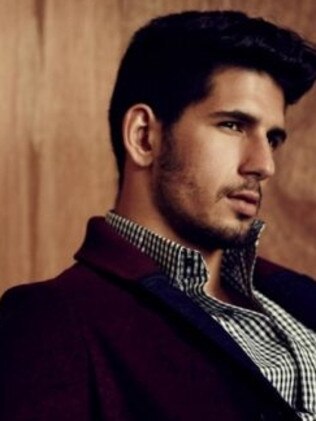
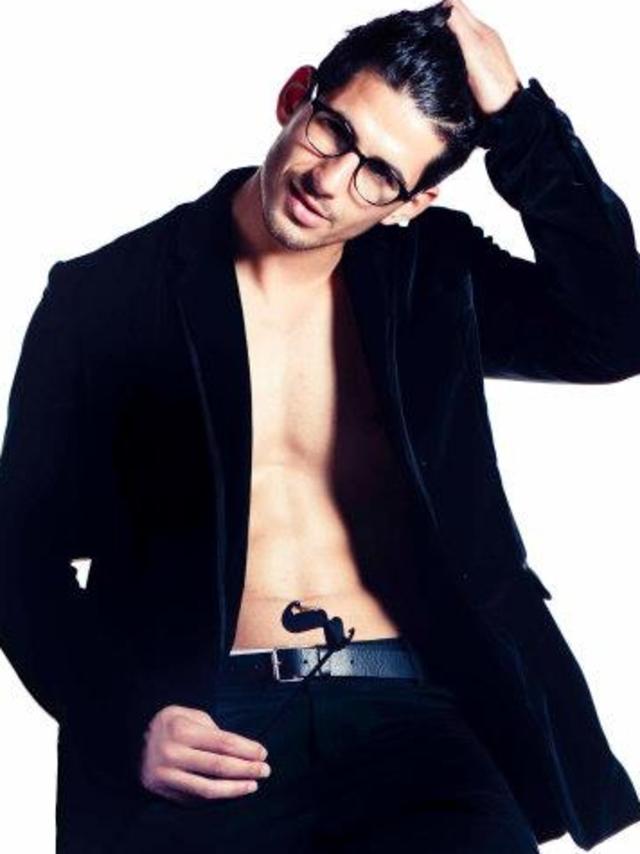
Things went better for Topal, the budding model, who was one of several Victorians in a vicious brawl with Sydney Comanchero in Canberra last year.
Topal put his modelling career on the line by smashing a glass on his forehead before wading into the fight.
The James Bond lookalike emerged shaken but not stirred, much healthier than two Perth members who visited Victoria in 2016 to discuss some in-club issues and were sent home with bullet wounds.
There seems to be a pattern here.
As one detective said during the week, “It’s not a good time to be a member of the Comanchero.”
LISTEN NOW: LIFE AND CRIMES WITH ANDREW RULE PODCAST FOR MORE
iTUNES: DOWNLOAD LIFE AND CRIMES WITH ANDREW RULE PODCAST
This might be why Jay Malkoun is sticking with his Greek hideaway and why Mick Murray might find life safer in jail.
Meanwhile, badness never sleeps.
Police intelligence supports the view that of all the “one percenter” gangs, the Comanchero are the most dedicated to crime. That means having a slice of the lucrative but volatile amphetamines and cocaine trade, plus controlling or skimming rackets as diverse as brothels, stolen cars, strip clubs and tow trucks.
The Comanchero have actively recruited “hard men”, often with martial arts or firearms experience.
Even back in 1984, they were notorious for carrying shotguns on their motorbikes, which caused gun laws to change after the Milperra massacre.
A “star” recruit was Josh Faulkhead, who joined the Comanchero after returning from active army service in Afghanistan where (he claimed) he was a sniper known to Afghan insurgents as the “White Devil”.
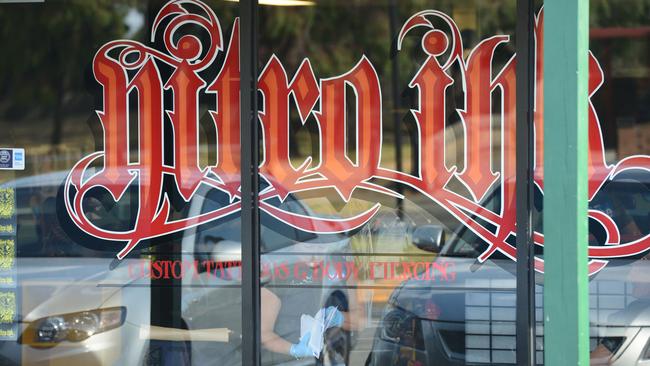
Whether his military exploits matched his boasts, Faulkhead looked and acted the part: his once skinny body was heavily muscled from pumping iron and steroids and covered in tattoos, and he had proficiency with weapons.
Faulkhead instilled fear, if not respect, when he returned to his hometown of Mildura with a mission — to take over the “ice” trade that the Rebels outlaw motorcycle gang had dominated. He and his associates were soon reputedly turning over more than $100,000 a week in the Mallee.
But that sort of reputation attracts trouble, even in the state outlaw bikers were calling “Switzerland” because it was regarded as a safe haven.
When the anti-bikie Echo taskforce came looking for Faulkhead with the Special Operations Group, the disciplined soldier knew to obey orders without argument and lay down in a Mildura street.
But his associate, Anthony Moss, ignored that strategy and paid for it: he was tasered and had his face messed up while resisting arrest.
Faulkhead adapted to prison life because it was similar to the military but he didn’t play well with others.
During the Melbourne Remand Centre riots in 2015, other prisoners went to the ex-soldier’s cell to remove the door from its hinges to free him.
Faulkhead told them to Faulk off or he’d kill them. Apparently, he didn’t want the visitors to mess up his extremely neat living quarters. Wisely, they left him alone.
Outside, the Echo taskforce was still taking scalps.
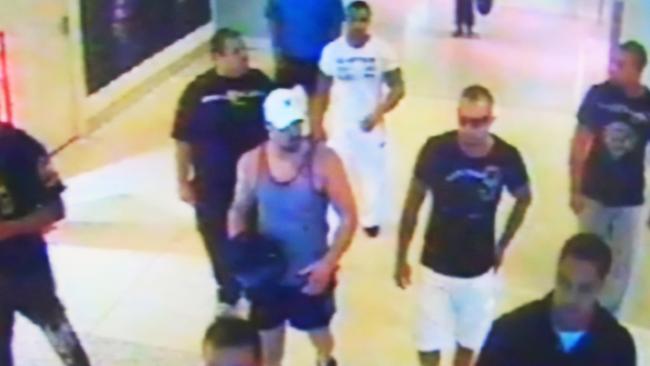
This was a turnaround from the decade before, when Victoria Police ignored the outlaw motorcycle gangs’ growing influence.
Echo investigators gathered intelligence showing there were more than 1200 “patched’’ bikies and many hundreds more “associates” in Victoria.
It took until 2014 for the enforcers to gain on the outlaws, largely under the leadership of Det Sen Sgt Wayne Cheesman.
In what seemed an amiable meeting with then Comanchero leader Jay Malkoun, Cheesman was calmly told that if club members were harassed, police would be murdered. Cheesman was also calm.
The police answer to that brutal attempt to bluff and intimidate was to mount a series of raids that would close club houses and jail dozens of bikers — including half the 50 active Comanchero in the state — for offences ranging from threats to assaults, from car part and caravan thefts to drug trafficking and stockpiling weapons.
But bikers are like bull ants. They are resilient.
Despite so many being in prison, they have started to fight back, kickstarting a crime wave that is still breaking in Victoria.
One man who might have some insights into that is Comanchero big man Mick Murray, but he’s not talking.
That is why he was jailed for eight months in March, after refusing to answer questions put by Victoria’s chief examiner.
His only answer from the witness box was to growl, “I’m not a dog”.
Interested parties on both sides and in the police force are waiting to see what happens when he gets out of jail next spring.
LISTEN NOW: LIFE AND CRIMES WITH ANDREW RULE PODCAST FOR MORE


